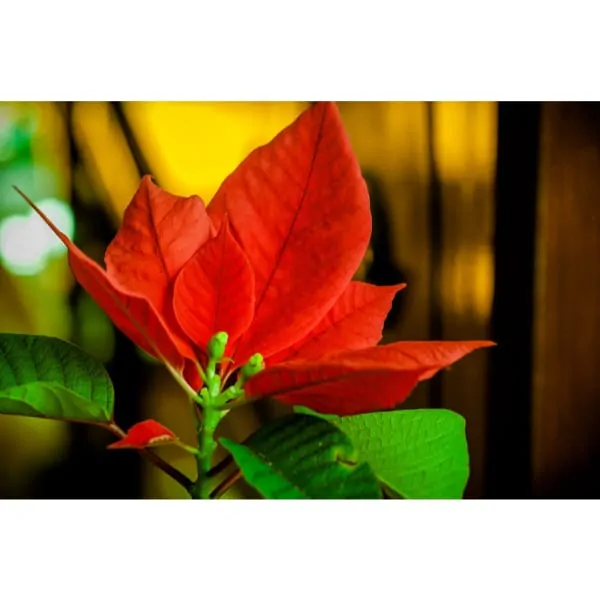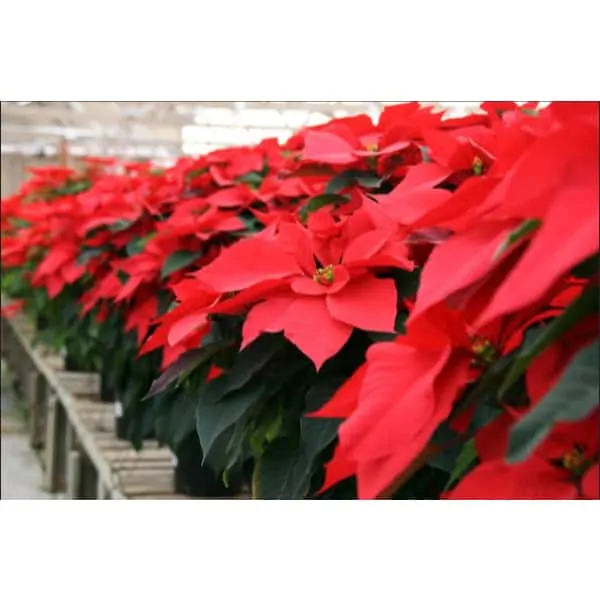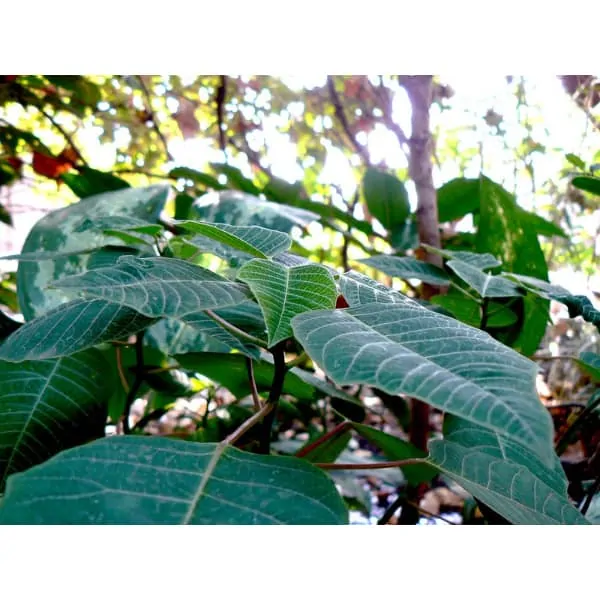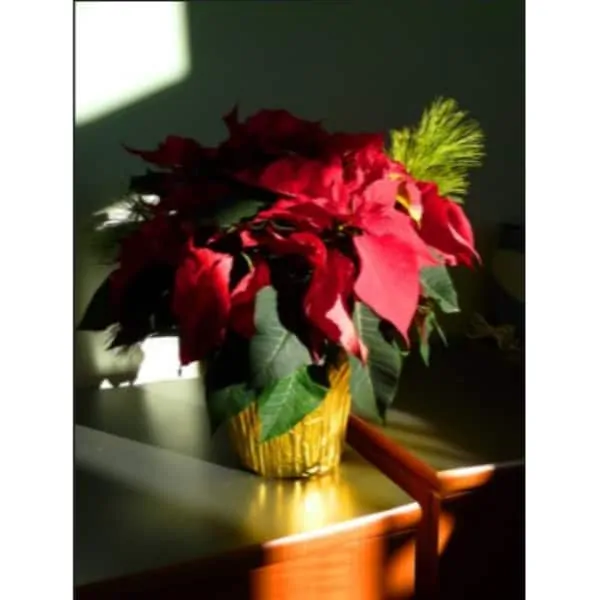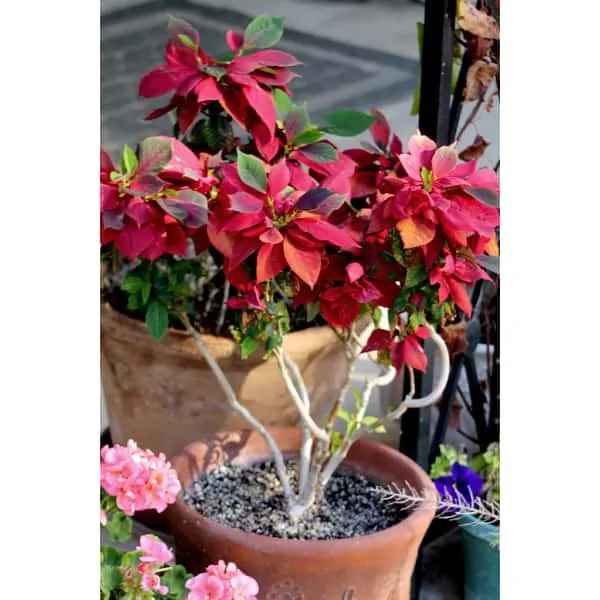Poinsettia Care Tips For All Year Round
Here are some useful tips and tricks you can use to take care of your poinsettia plant even after Christmas has passed.
Poinsettia Care 101
You have probably seen or even had poinsettias before. They usually increase in popularity around December and they are popular Christmas plants. The red leaves at the end of the stem, usually considered flowers, have a wintery look, and the contrast with the green lower leaves is striking. You also know they are notoriously difficult to keep alive longer than a few months.
These Christmas flowering plants usually don’t last past spring because of insufficient care. Simply put, being nursery plants, they need some extra attention to switch from the conditions in the nursery to the ones in your home. And they rarely come with detailed instructions, but this changes now! Here is an easy guide on taking care of your poinsettias all year round!
Christmas Poinsettia Care Tips
Poinsettia care outdoors
Even though they are popular Winter plants, poinsettias are not cold hardy. They only survive outdoors in USDA hardiness zones 9-11, and freezing temperatures can be deadly for these plants. So only plant them outdoors if you are sure the chances of frost are low to none. Wait for the leaves to wilt, cut the plant back two buds, and plant it in spring in a sunny spot, sheltered from the wind.
Outdoors, the poinsettia can grow tall and leggy, so trim it back to shape it like a bush. The lush leaves you see in a pot will probably not reappear once planted outside.
Poinsettia care after Christmas
Poinsettia is a heavy feeder. It will need regular doses of organic fertilizer or a slow-release one in the soil to stay healthy. Remember, in the nursery, this plant was kept in optimal conditions so you should keep it as well as you can. This means providing full sun and a spot sheltered from drafts or heating vents.
Poinsettia Care FAQ
How long do poinsettias last?
The plant itself can last for years with the right care. It does need full sun for most of the year and a warm environment to do so, though. Caring for a poinsettia plant begins before buying it. The plant could have been damaged before it got to the shop by cold air or insufficient light. The pots are usually small, so consider replanting poinsettias with an alkaline potting soil as soon as they arrive and feed it well.
The red leaves last until spring in perfect conditions. When there is enough light for photosynthesis again, they turn green and will stay green unless you force them to go red. To get them back next year, you need to completely block any kind of light from reaching the leaves for 12 hours a day, every day, until the leaves are bright red. This can be achieved by putting the plant in a closet, as long as it’s as warm as in the rest of the room and there is no draft.
How to keep a poinsettia year-round?
If you want it for the sake of achievement, then take good care of it by watering it only when the soil is dry, providing it with enough light and heat, and feeding it. But if you want it for the red leaves, then it’s easier to not keep it all year. Not only is it difficult to convince to go red again, it is also a mildly toxic plant for pets, and its sap is irritating. Simply throw it out or compost it with your Christmas tree and get a fresh one next year!
How to keep poinsettias alive?
It is very important to note that poinsettias are sensitive plants. Keep them away from drafts and heaters, but also make sure the room it is in is warm enough and the plant gets as much sun as possible. Choose a good, rich potting soil that drains well and use fertilizer often. Poinsettias are also sensitive to many garden pests and plant diseases, from root rot to all kinds of bugs. At best, keeping poinsettias alive for an extended period of time is a lottery, because it can arrive already irreparably damaged.
How often to water poinsettias?
Poinsettias need a strict watering schedule. Check that the soil is dry and water abundantly until overflow starts pooling in the tray under the pot. Make sure the soil is well-draining and water doesn’t gather anywhere. Overwatering can be deadly to this plant. For more tips on watering, check out this post!
Poinsettia Care Summary
Light: Keep in a sunny window or plant outside in full sun. In very warm climates, it can take partial sun as well. To force the leaves to turn red, keep the plant away from any source of light, including streetlights and nightlights for 12 hours every day.
Water: Water regularly, once the soil has dried out completely. Make sure you only water until excess starts pooling in the tray. Let it sit for a few hours, then throw away the excess water. Avoid stagnant water as well as you can.
Temperature: Indoors, keep poinsettias at an even temperature, preferably above 55°F (18°C) for them to grow properly. Do not keep outside unless there is no chance of the temperature going below 50°F (10°C)!
Soil: Use a rich, alkaline, well-draining soil for your plants. Mix sand or small pebbles in peat to create your own potting mix.
Fertilization: Poinsettias are heavy feeders so mix in a slow-release fertilizer with the potting soil or add liquid fertilizer in the water every other week. If you repot the plants, also use rooting hormones to improve the chances of them taking root.
Light
Full sun. Keep in perfect dark for 12h to get red leavesWater
Abundantly when the soil is dryTemperature
Constant around 18°C (55°F)Soil
Alkaline, well-drainingDifficulty
Medium to advancedToxicity
Irritating sap, mildly toxic to petsFinal Comments
What will you do with your Christmas flower? Will you follow these poinsettia care tips and see if you can get it to bloom next year? Let me know in the comments section below! And don’t forget to show your work and share your progress!

